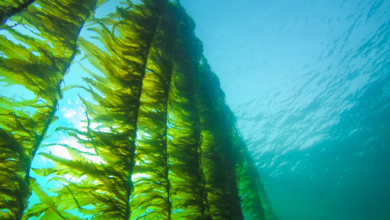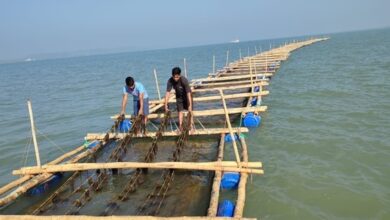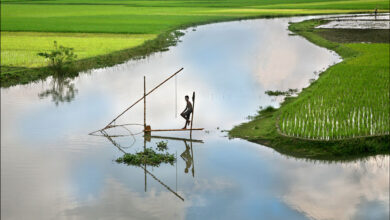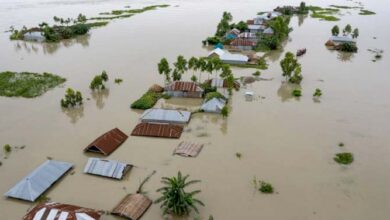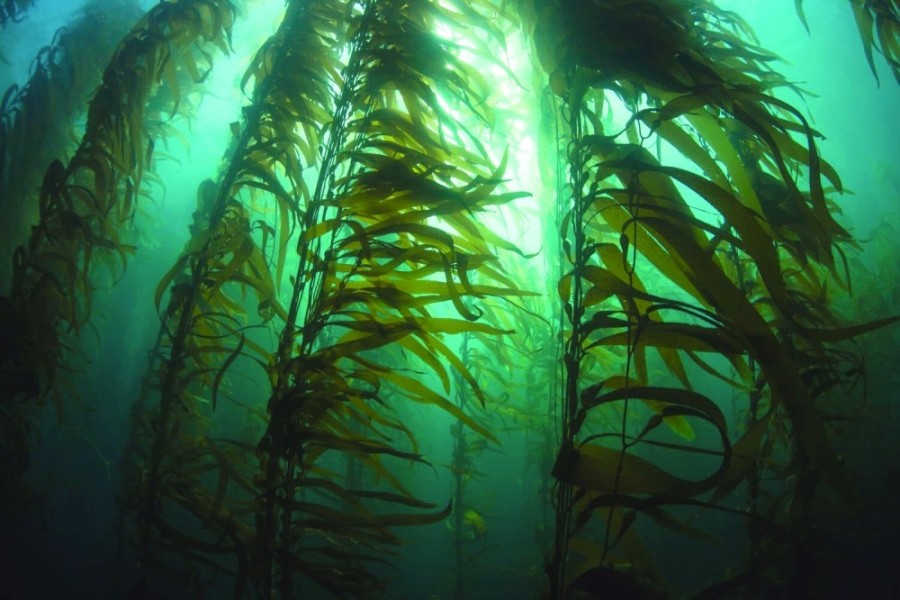
Seaweed absorbs enormous amounts of CO2, and it is well-acknowledged in the scientific community. But the extent of its potential for carbon removal on an industrial scale remains unknown.
Therefore, a team of PML scientists is now attempting to determine the potential role of offshore seaweed cultivation in future carbon capture and storage. The project is part of a unique €1.5 million initiative financed by Amazon’s Right Now Climate Fund.
North Sea Farm 1 is a first-of-its-kind offshore seaweed farm constructed in collaboration with North Sea Farmers (NSF), a worldwide non-profit seaweed farming membership organization. North Sea Farm 1 is situated among offshore wind turbines. This Farm could serve as a model for how similar farms could be employed for future large-scale carbon collection.
Carbon sequestration as a co-benefit of Seaweed (macroalgae) aquaculture has recently attracted a great deal of interest in academic, government, and business settings around the world. This has been driven by the increasing global interest in climate change mitigation.
For “blue carbon” ecosystems such as mangroves, seagrasses, and salt marshes, carbon is stored in mud or silt in the local area; as the plants develop and die, their decaying matter is absorbed into the soil below.
From 2000 to 2018, seaweed aquaculture expanded by 6.2% each year, and there are a number of new and rising markets for seaweed products. Given the immensity of the open ocean, if an efficient method of offshore seaweed farming could be devised and scaled out, it might theoretically have a significant impact on carbon sequestration and fight climate change worldwide.
Dr. Ana Queirós, a senior marine and climate change ecologist at PML who is directing the research, stated in a press release, “I am very enthusiastic about this project and the knowledge gap it aims to fill. The carbon dioxide removal capacity of the seaweed sector remains untested, and the goal is to determine how Seaweed may be employed for long-term carbon sequestration. There is much interest in the expansion of the sector, but we need evidence to assess the true blue carbon value of these habitats.”
The director of EU sustainability, Zak Watts, stated, “Seaweed could be a crucial tool for absorbing carbon dioxide from the atmosphere, although it is currently cultivated on a relatively small scale in Europe. We are thrilled to finance this initiative in order to gain a deeper knowledge of its potential to combat climate change.”
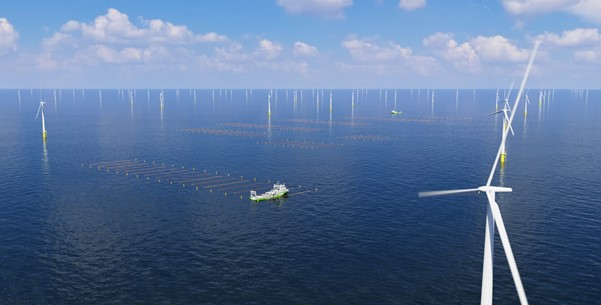
Quantifying the Benefits
It has been estimated that around 11% of the entire ocean area, or 48 million km2, is suitable for seaweed aquaculture. Consequently, a potential maximum annual sequestration from seaweed farming would be 72 billion tons, which exceeds global annual emissions.
Analyzing the world’s coastal habitats, some scientists determined that around 48 million square kilometers of coastline would be ideal for the production of Seaweed on a global scale. If we cultivated even a tiny portion of this area (273 square kilometers, or 0.001%), the growing Seaweed would absorb enough carbon to balance the emissions of the whole aquaculture industry.
Moreover, it is estimated that seaweed stores around 175 million tons of carbon per year, which is equivalent to 10 percent of the global emissions from all automobiles. This suggested to many scientists that Seaweed may join blue carbon storage in mangroves and wetlands as a crucial tool in the fight against climate change.
Uncertainty and Risks
There is no unmixed good in science, and major overlooked issues related to seaweed farming has identified too. Such as Ecological viability; Technological viability; Economic viability; Co-benefits and risks; and Governance and societal factors.
Moreover, seaweed farming may add up extra carbon to the atmosphere. Seaweed provides additional food for filter-feeding organisms, such as sea squirts and shellfish that live amid Seaweed.
As a result of consuming this additional food source, these organisms exhale additional carbon dioxide. Individually, the amount is quite small. However, on an ecosystem scale, their abundance and capacity to filter vast quantities of water make this amount significantly large. This may add up to extra CO2 in the air.
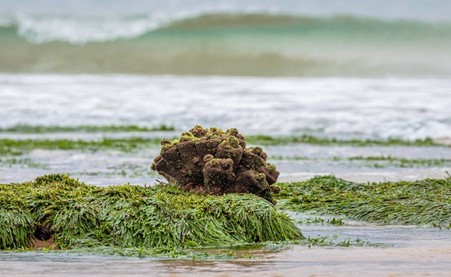
How may Bangladesh act?
Although approximately 80% of the world’s Seaweed is produced in Asia, Bangladesh only produces 600 tons annually. According to the Food and Agricultural Organization, Bangladesh has immense potential for seaweed production since its beaches, estuaries, and mangroves make it a suitable environment for the plant. The country has approximately 700 kilometers of coastline and 25,000 square kilometers of the coastal territory.
However, Bangladesh has roughly 8500 km2 of exploitable coastal land (5 m depth) and is home to 335 different varieties of wild seaweed populations. Some of these are cultivated on a limited scale due to environmental, technological, and socioeconomic constraints.
Approximately 32 species of Seaweed are most prevalent along the coast of Bangladesh, of which 14 are commercially viable, but only four are cultivated but on a modest scale.
In Bangladesh, around 300 households are engaged in seaweed farming at Nuniarchara, Inany Beach, and Reju Khal in Cox’s Bazar, generating 390 tons with potential applications in the food, cosmetic, feed, and medicines industries.
Bangladesh is, however, mostly concerned with the usage of raw Seaweed in the food, cosmetic, and feed industries. Products from Seaweed include desserts, noodles, salad, drinks and smoothies, sunscreen, and other cosmetics.
To fight climate change, Bangladesh needs large-scale afforestation of Seaweed along its coastal areas. If policymakers take Seaweed seriously, future initiatives to offset carbon may include a totally different type of forest planting in Bangladesh.
Jaber Bin Abdul Bari
Department of Oceanography, NSTU

